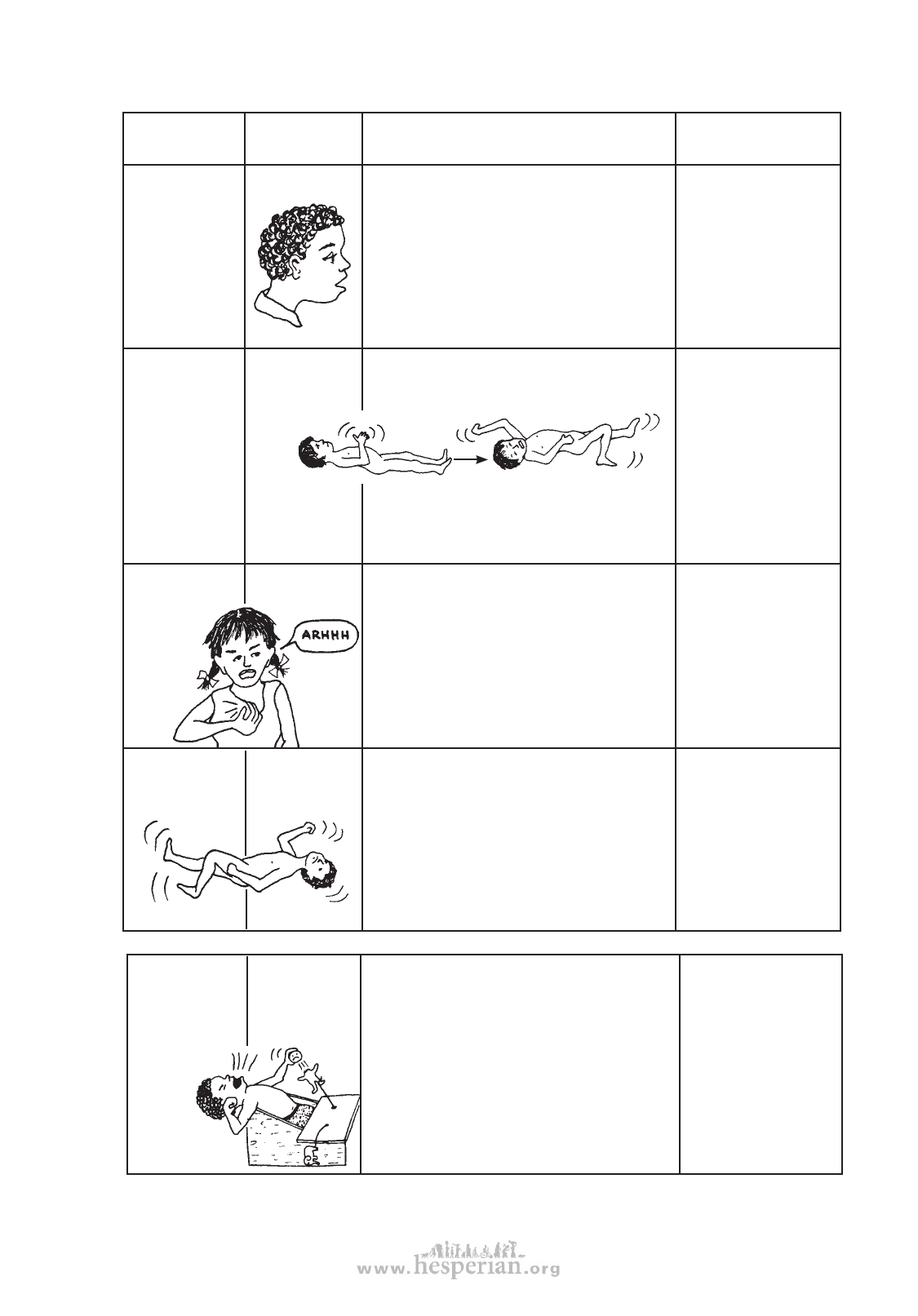
Types of epileptic seizures (continued)
SEIZURES 241
TYPE
Blank spells or
‘absences’ (petit
mal). (This type
of seizure alone
is rare.)
AGE SEIZURES
BEGIN
3-15 years
‘Marching’
seizures
(Focal
seizures)
any age
APPEARANCE
Child suddenly stops what she is doing and
briefly has a strange, empty or ‘blank’ look.
She usually does not fall, but does not seem
to see or hear during the seizure. These
‘absences’ usually happen in groups. She may
make unconscious movements, or her eyes
may move rapidly or blink. These seizures
can be brought on by breathing rapidly and
deeply. (Use this as a test.) Often confused
with ‘psychomotor’ seizures, which are much
more common.
Movement begins in one part of the body. May
spread in a certain pattern (Jacksonian march)
and become generalized.
TREATMENT
Valproic acid or
ethosuximide. Since
many children also
have ‘big’ seizures,
add phenobarbital
if necessary (or try it
first if you think the
seizures might be
‘psychomotor’ —see
below).
Phenobarbital or
phenytoin (or both).
If poor results, try
carbamazepine or
primidone.
Mind-and-
body seizures
(psychomotor
seizures)
any age
Generalized or
‘big’ seizures
(grand mal)
any age
Note: If seizures that occur in one part of the
body get worse and worse, or other signs of
brain damage begin to appear, the cause might
be a brain tumor.
Starts with ‘warning’ signs: sense of fear,
stomach trouble, odd smell or taste, ‘hears’ or
‘sees’ imaginary things. Seizure may consist
of an empty stare, strange movements of face,
tongue or mouth, strange sounds, or odd
movements such as picking at clothes. Unlike
‘blank spells’, these seizures usually do not
occur in groups but alone and they last longer.
Most children with psychomotor seizures later
develop ‘big’ seizures.
Loss of consciousness—often after a vague
warning feeling or cry. Uncontrolled twisting
or violent movements. Eyes roll back. May
have tongue biting, or loss of urine and bowel
control. Followed by confusion and sleep.
Often mixed with other types of seizures. Often
family history of seizures.
Try phenobarbital first
—then phenytoin, or
both together, then
carbamazepine, or all 3
together. Valproic acid
may also be useful.
Or primidone instead
of phenobarbital.
Psychological
counseling sometimes
also helps.
Try phenobarbital first.
Then phenytoin. Then
carbamazepine
—or combinations.
Or combine primidone
with one or more of the
others.
Temper tantrum
fits (not really
epilepsy)
under 7 years
Some children in ‘fits of anger’ stop breathing
and turn blue. Lack of air may cause loss of
consciousness briefly and even convulsions
(body spasms, eyes rolling back). These brief
fits, in which the child turns blue before losing
consciousness, are not dangerous.
No medical treatment
is needed. Use methods
to help the child
improve behavior (see
Chapter 40).
disabled village children